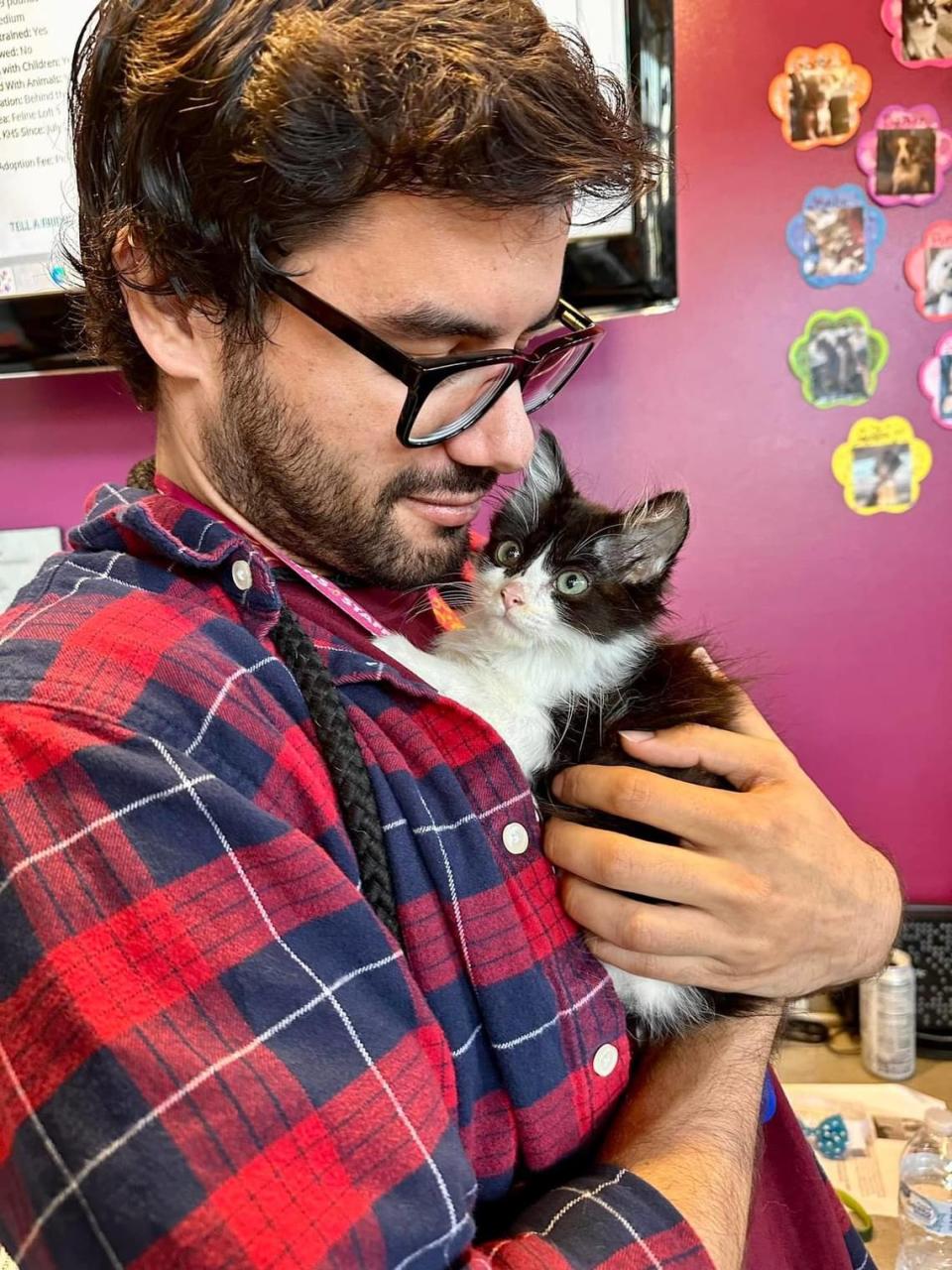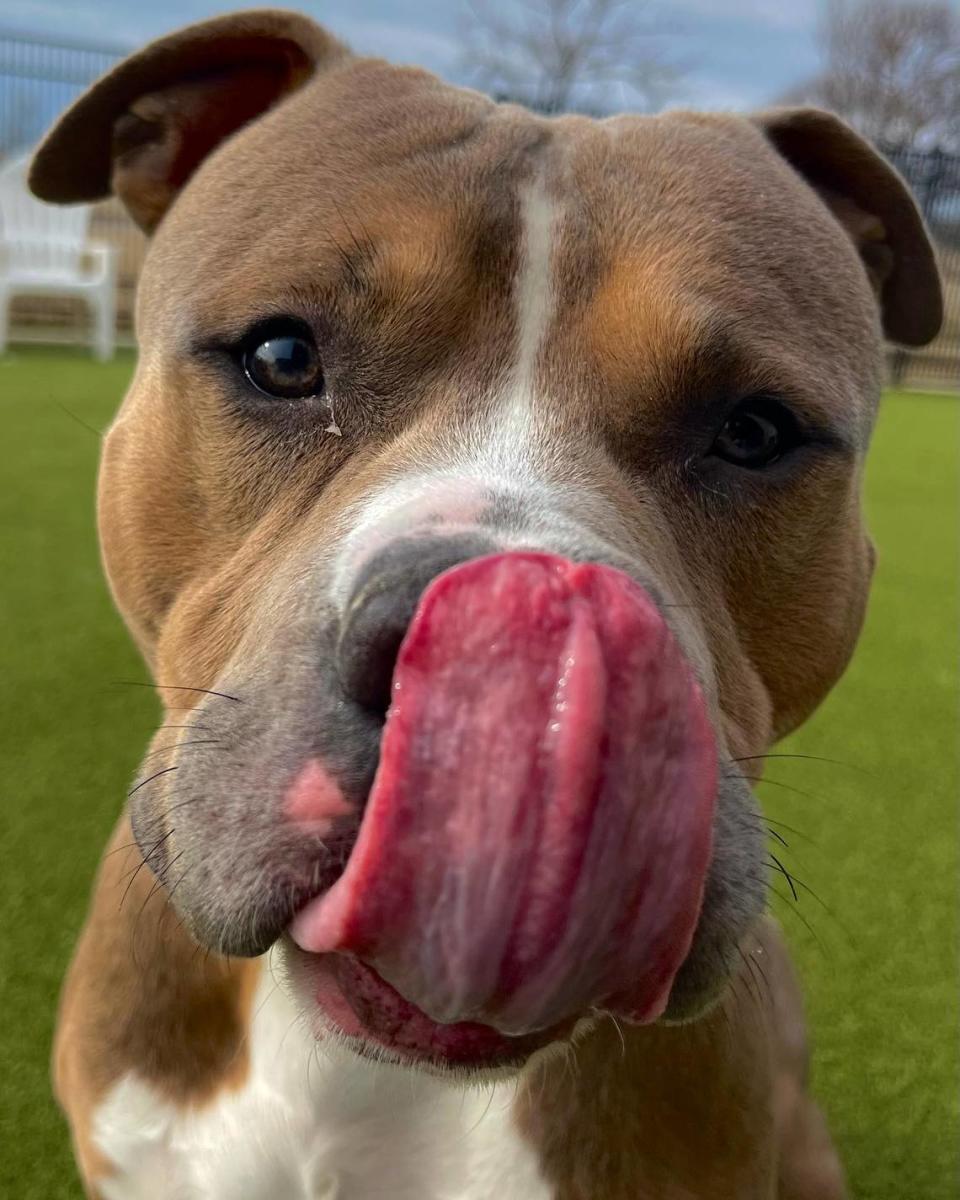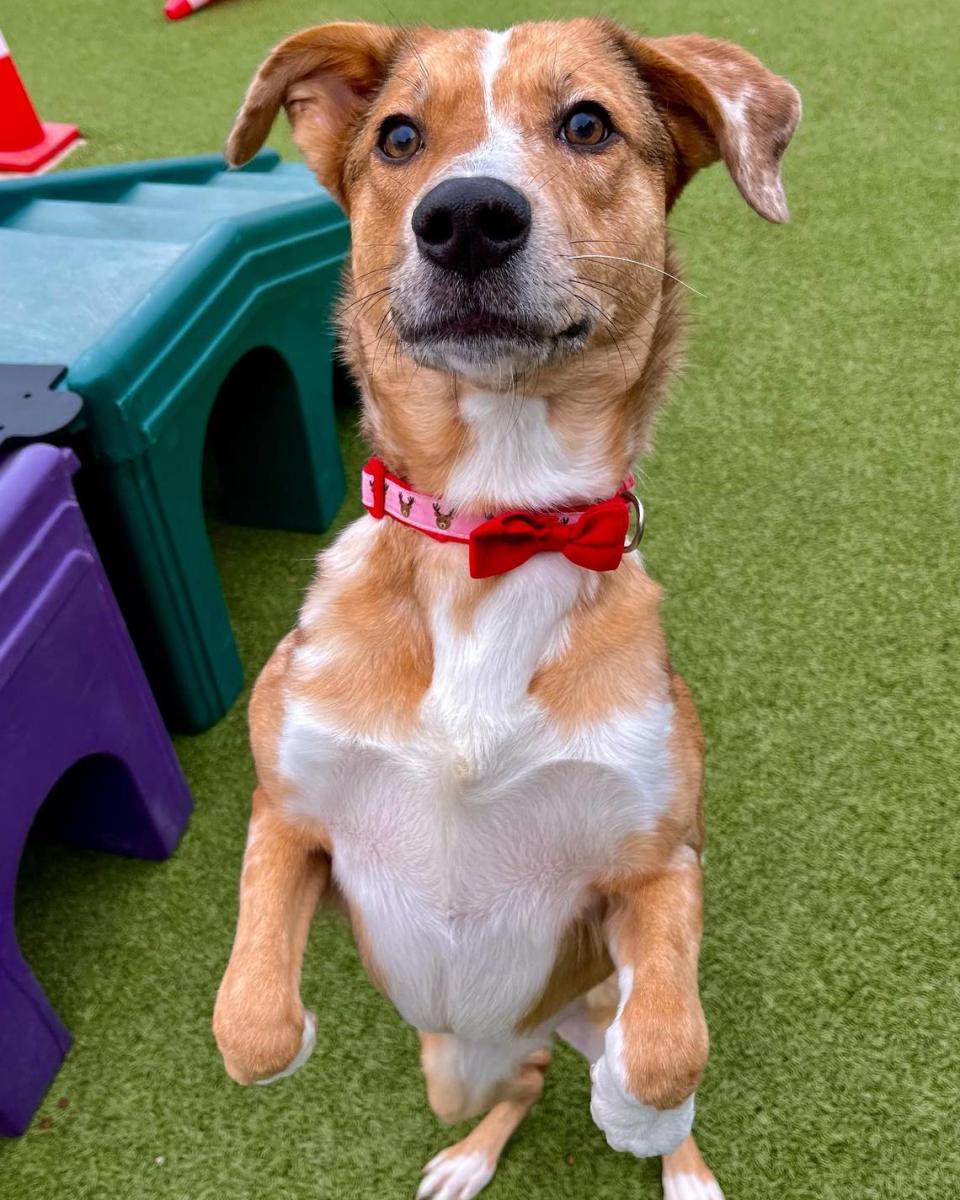‘Pretty scary’ rescue situation: ‘There’s just nowhere for all these animals to go’
Just how bad is the overcrowding situation at dog and cat shelters in and around Wichita?
Historically, people with animal-support groups have had their fingers in the dam trying to stem the tide of problems, said Christy Fischer, executive director of the Wichita Animal Action League.
Today, she said, “The water is now crashing over the top of the dam.”
Two puppies, both of whom had been at risk of euthanasia but now aren’t, wrestled and played in her office as Fischer spoke.
“I’m fostering some cats in my office right now,” said Kansas Humane Society director of marketing and communications Jordan Bani-Younes.
As he tried to explain the overall problem, a mama cat and two kittens purred and played in the background.
“Stop it!” Bani-Younes scolded as they tried to eat his lunch. “That’s my chicken!”
It made for a cute, if noisy, interview. However, the situation for a lot of unhomed — and unfixed — dogs and cats of Wichita is anything but adorable. It’s desperate.
“It’s pretty scary the situation that everyone’s in,” Fischer said. “Frankly, there’s just nowhere for all these animals to go.”
Cheryl Taskinen, the TNR (Trap, Neuter, and Return) coordinator for Friends of Felines KS., said the organization still hasn’t finished applications from September.
“If you get on our list now, we might get to you by spring.”

The list at the organization, whose sole mission is to fix cats, was at 1,275 in early December with weeks still to go.
Last year, the total was 1,305.
“We should blow that one out,” Taskinen said. “We’re getting applications that we haven’t seen in the past.”
The Humane Society has more than 500 animals in line to be surrendered to the organization through March.
Bani-Younes said people are asking, “ ‘When can I get my animal in?’ And they’re angry, and I get it.”
So what’s going on?
One of the biggest challenges has its roots in the pandemic.
The Humane Society and other shelters had to close for a couple of months. Then supplies such as gloves, masks and cleaning products they normally use for spaying and neutering surgeries had to go to fight the pandemic instead.
“Before COVID, we were managing it,” Bani-Younes said. “Right now, we’re drowning.”
Because so many cats and dogs weren’t fixed, many more were born.
That changes things for the entire lives of those animals.
“It’s likely not going to change for at least a decade,” Bani-Younes said.
Fischer said the end may not be in sight for even longer.
“It’s going to take at least 10 to 15 years . . . and that’s if we can increase our local spay and neuter numbers.”
Fischer said she read a study recently that said nationwide there were about 8 million animals born due to the pandemic that wouldn’t be here otherwise.
WAAL can’t take more than 850 to 1,000 animals a year, but Fischer said, “We’ve seen a drastic increase in the number of requests for us to take in animals.”
Part of that is because a lot of people who decided they needed pets during the pandemic now decided they don’t since they’re back to their regular offices.

Another factor is the economy and all the issues surrounding it, such as people who can’t afford to care for their animals and either abandon them or try to give them to rescues.
Taskinen referred to it with a word that’s a common refrain in the rescue community:
“It can be overwhelming.”
Widespread struggles
Donations and fundraising have taken a hit at a lot of places, too — again in part because of the economy.
“We know it’s not just us,” Bani-Younes said. “A lot of shelters are struggling right now.”
He said there are “a million reasons why we aren’t raising as much.”
The end-of-the-year fundraising season is especially crucial for nonprofits, which often send reminders starting in November.
This November, the Humane Society lost more than 10,000 such letters when a truck they were in was involved in an accident on I-80 in Indiana.
“It hurts when one of our biggest campaigns gets affected like that,” Bani-Younes said. “It makes our job so much harder.”
Other than some of the services people pay for, he said, “We run solely on donations of the public”
Friends of Felines relies heavily on word of mouth for donations because the cost of stamps is so high.
“Being able to reach more donors would be great,” Taskinen said.
The group participates in events to help raise money, but she said, “If you ask the treasurer, she’s always scared. She doesn’t think we’re going to make our numbers.”
Since Friends of Felines charges on a sliding scale according to someone’s ability to pay, Taskinen said, “The biggest thing is always funds.”

Fischer said that WAAL also has “such a waiting list for the low-income services.”
Bani-Younes said due to the war in Ukraine, grain prices are higher, and a lot of people can’t afford to feed their pets, which is one reason they’re giving them up.
Fischer said housing — landlords change pet rules or tenants didn’t know them to begin with — is a major factor, too.
Jerri Bowman of the Joy Animal Rescue Mission in Maize said shelters like hers have to be realistic with requests.
“We believe in what we’re doing, and we want to rescue as many as we can,” she said. However, “You have to try to be a little bit smart about it.”
That means telling some people she can’t take their animals.
“It’s heart wrenching, but I have to be able to take care of my babies that I have here in the shelter.”
Community focus
So what can be done to alleviate some of these issues?
“The only way out of this is community-focused solutions,” said Lt. Derek Purcell of the Wichita Animal Shelter.
“We don’t have the tools or the ability to address the problem. All of that lies within the community.”
Purcell said WAAL is a model for other shelters. He wishes that, like WAAL, others could focus on the root problem instead of simply taking in animals. That means more spaying and neutering.
“Make the shelter part of a place where you can find solutions to the problems.”
Fischer said WAAL has specific programs where staff members go door to door in low-income areas trying to check that animals have been fixed.
“Sometimes the best we can do (is) to mitigate and prevent animals ending up in crisis in the first place.”

Also, Fischer said it’s important to look at ways to support owners keeping their pets through emergency pet food banks, training grants and veterinary assistance programs.
If everyone pulls together, Purcell said, “We’d find ourselves on the opposite of this overpopulation problem a lot faster.”
He said he never wants money to keep people from coming to the shelter to claim a pet, and he said he will work with them.
“I’d rather that animal be in your house than in the shelter.”
However, for someone who can’t keep an animal, he said, “The best thing to do is bring it to the shelter.”
Purcell said there’s a stigma about bringing animals to shelters, but he said, “Nobody here wants to euthanize animals.”
He and others said microchipping is crucial. Also, people should not take on more animals than they can care for.
For those who can take on more, Purcell said, “Right now the one thing we need more than ever is people to adopt.”
And, at the very least, everyone could probably try to have a little more patience and understanding with all the people struggling to help dogs and cats.
“Everyone here is here for the animals,” Bani-Younes said. “I truly don’t believe anyone here is doing it for the paycheck.”
In fact, Fischer said she’d gladly give up hers.
“I always say, ‘I hope some day I am . . . fired because my job is no longer needed.’ I would be happy with that.”
Local reporter known as the Crazy Chicken Lady adds cats to her resume

